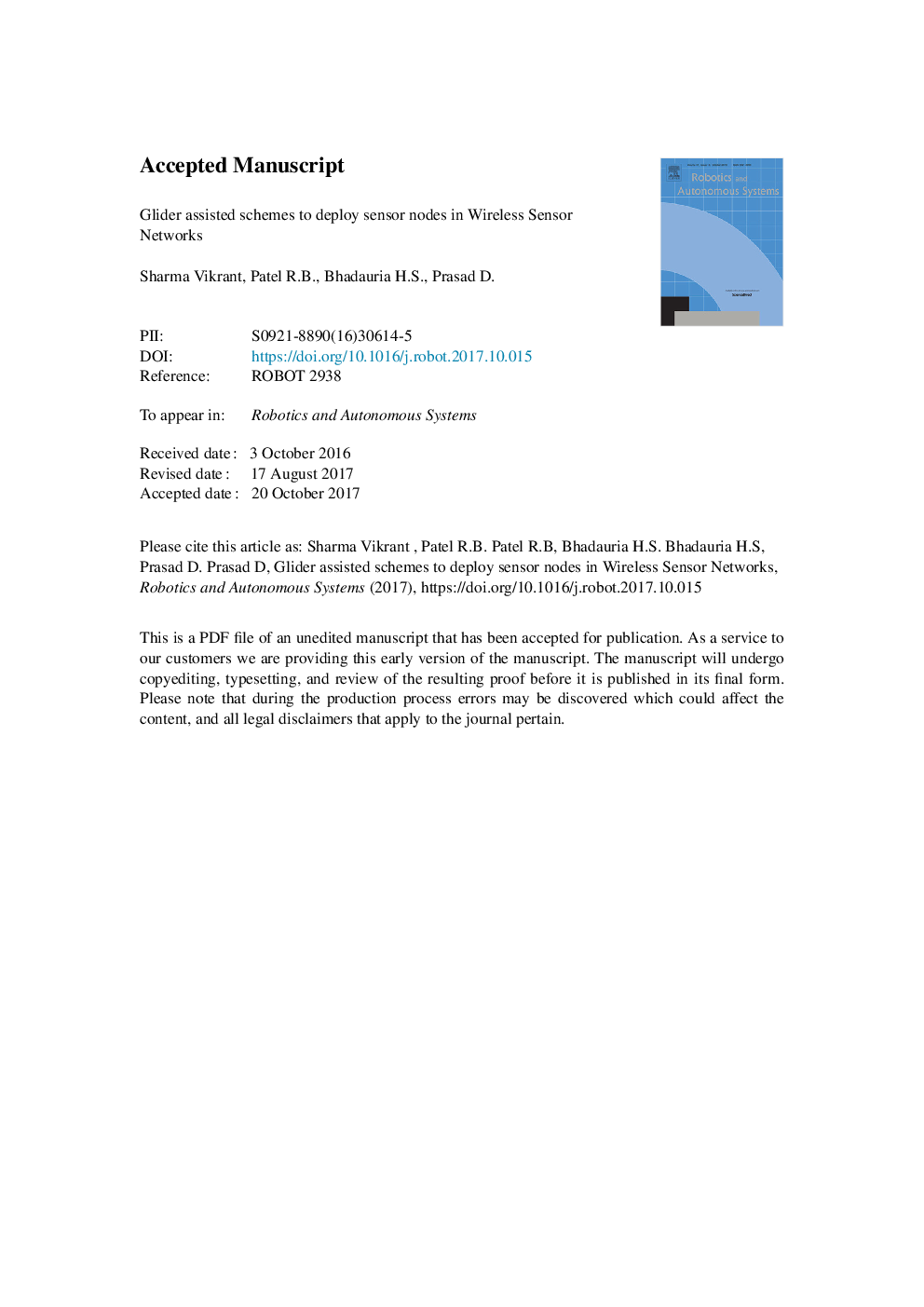| Article ID | Journal | Published Year | Pages | File Type |
|---|---|---|---|---|
| 6867295 | Robotics and Autonomous Systems | 2018 | 25 Pages |
Abstract
Wireless Sensor Network (WSN) is emerging as a valuable resolution to distant monitoring and control issues. These are used to keep an eye on the remote, hazardous, antagonistic, and large-scale target-regions. Random dispersion of Sensor Nodes (SNs) from air is the most suited technique to set up WSN in such regions, but it endure various imperfections, i.e., a large number of SNs are needed to attain preferred coverage level. Moreover, its randomness may be hampered by atmospheric winds while dropping from air. In this research article three models for the precise placement of SNs have been proposed. Each successive model is an enhancement and refinement of its base model. The proposed models utilize the potential attained as a result of high falling height to position the SNs on their preferred locations (PLs). All the PLs are computed initially and SNs are equipped with a small sized economical carrier glider (CG) which floats them to their PL. The movement of a glider is controlled by the piloting SN. The first model defines the significance of a virtual path and the technique used by a CG to follow it to reach its PL. But, it suffers from a path swerving problem. The second model incorporates the virtual-path updating mechanism in the basic model. This rectifies the problem of path swerving and makes it resistant to the winds. The third model further refines its base model by introducing a radius reduction technique to enhance its precision and energy efficiency. The proposed models use an obstinate technique to maintain the direction of movement of a floating CG towards the PL in order to deal with atmospheric winds.
Related Topics
Physical Sciences and Engineering
Computer Science
Artificial Intelligence
Authors
Sharma Vikrant, Patel R.B., Bhadauria H.S., Prasad D.,
